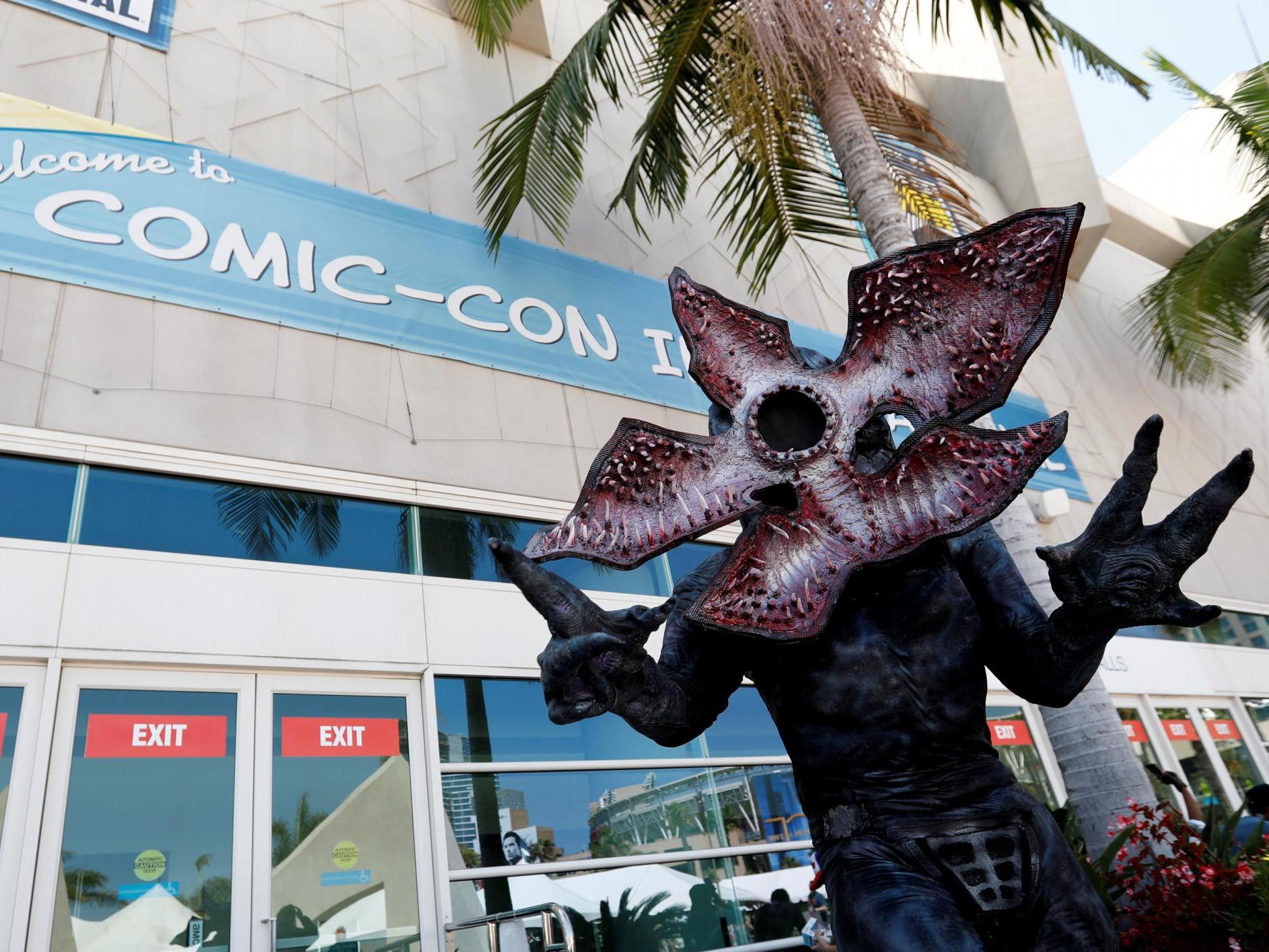Comic-Con 2018: How the San Diego pop culture festival became a commercial juggernaut
Fans of science fiction, horror, anime and superheroes gather in southern California every summer for weekend-long cosplay and collectibles extravaganza
Your support helps us to tell the story
From reproductive rights to climate change to Big Tech, The Independent is on the ground when the story is developing. Whether it's investigating the financials of Elon Musk's pro-Trump PAC or producing our latest documentary, 'The A Word', which shines a light on the American women fighting for reproductive rights, we know how important it is to parse out the facts from the messaging.
At such a critical moment in US history, we need reporters on the ground. Your donation allows us to keep sending journalists to speak to both sides of the story.
The Independent is trusted by Americans across the entire political spectrum. And unlike many other quality news outlets, we choose not to lock Americans out of our reporting and analysis with paywalls. We believe quality journalism should be available to everyone, paid for by those who can afford it.
Your support makes all the difference.This year’s Comic-Con International: San Diego takes place in southern California from 19-22 July.
The biggest entertainment expo in the world, Comic-Con has grown from humble origins to become one of the most influential pop culture events in the calendar, attracting large crowds, panels of A-list franchise stars and exclusive trailer premieres.
An opportunity for fans to meet their heroes, score autographs, buy collectibles, dress up and interact with fellow enthusiasts – no matter how niche the shared obsession – Comic-Con is now in its 48th year and going from strength to strength.
This is in no small part thanks to the boom in interest in CGI superhero blockbusters since the turn of the millennium and the emergence of Marvel as a Hollywood power player.
Comic books and genre fare have joined the mainstream since the dawn of the internet and Comic-Con's sprawl perfectly represents the opening out of the culture.
The inaugural event, held on 21 March 1970, was known as Golden State Comic-Minicon and held at downtown San Diego’s US Grant Hotel. It was masterminded by fanboys Shel Dorf, Richard Alf, Ken Krueger, Mike Towry, Barry Alfonso, Bob Sourk and Greg Bear, who hoped to attract enough fans to stage a more ambitious convention later that summer.
They succeeded. While 100 people attended the first, 300 came to the second, with legendary illustrator Jack Kirby and science fiction novelist Ray Bradbury among the invited guests and the events offered including discussion panels, a dealers’ room and film screenings.
Kirby advised the organisers not to restrict themselves solely to comic books and make the conference multimedia, taking in sci fi and fantasy novels, genre films and television – a sound suggestion that gave the convention room to expand into emerging new areas like video games and draw from a much wider pool of fans, appealing to lovers of anime and horror alike.
Swiftly becoming an annual fixture, Comic-Con moved to the El Cortez Hotel and the Convention and Performing Arts Centre, before finally shifting to the city’s labyrinthine Convention Centre where it has been held every year since 1991.
Today, the event typically attracts crowds of around 130,000, many of whom take part in cosplay – a Japanese import that has become a signature of Comic-Con.
Popular costume options at 2017’s conference included: Deadpool, Wonder Woman, The Joker and Harley Quinn, Dr Strange, Beetlejuice, Moana, Ghost Rider, Lando Calrissian, Gomez and Morticia Addams, Shredder and Krang, the Demogorgon and “Make the Empire Great Again” Storm Troopers with Donald Trump hair.
Revellers brave the sweltering summer heat to pose for pictures in costumes that are cheered for their ingenuity, effort and attention to detail, the best invited to take part in a ticketed catwalk “masquerade” to model their outfits.

Comic-Con has been praised for the atmosphere of friendly inclusivity it fosters but those less enamoured have satirised it as “Line-Con”, a complaint about the amount of queueing required for everything from fast food to signings to entry to the hallowed Hall H, where Henry Cavill and company hold court.
Like Glastonbury, Coachella or SXSW, the massive commercialisation of Comic-Con has also attracted criticism.
Comics publisher Mile High announced they would no longer attend in 2017 after 44 years due to the rise in the cost of a booth, stating in a blog post that the price of reserving one had ballooned from $40 in 1973 ($232 or £176 today) to $18,000 (£13,655).
The cost of attending Comic-Con is high, especially when the price of hotel rooms and parking (up to $50 a night) is factored in with the price of tickets: $63 (£48) a day for adults, $31 (£24) for under-17s on the busy Thursday, Friday and Saturday instalments.
Nevertheless, Comic-Con inspires huge loyalty and provides a rare opportunity for fans to see sneak previews of highly anticipated new movies and encounter the likes of Gal Gadot, Chadwick Boseman and Tom Holland in the flesh.

Join our commenting forum
Join thought-provoking conversations, follow other Independent readers and see their replies
Comments